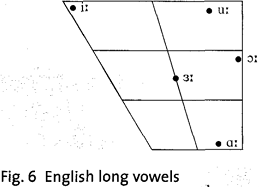

Grammar


Tenses


Present

Present Simple

Present Continuous

Present Perfect

Present Perfect Continuous


Past

Past Simple

Past Continuous

Past Perfect

Past Perfect Continuous


Future

Future Simple

Future Continuous

Future Perfect

Future Perfect Continuous


Parts Of Speech


Nouns

Countable and uncountable nouns

Verbal nouns

Singular and Plural nouns

Proper nouns

Nouns gender

Nouns definition

Concrete nouns

Abstract nouns

Common nouns

Collective nouns

Definition Of Nouns


Verbs

Stative and dynamic verbs

Finite and nonfinite verbs

To be verbs

Transitive and intransitive verbs

Auxiliary verbs

Modal verbs

Regular and irregular verbs

Action verbs


Adverbs

Relative adverbs

Interrogative adverbs

Adverbs of time

Adverbs of place

Adverbs of reason

Adverbs of quantity

Adverbs of manner

Adverbs of frequency

Adverbs of affirmation


Adjectives

Quantitative adjective

Proper adjective

Possessive adjective

Numeral adjective

Interrogative adjective

Distributive adjective

Descriptive adjective

Demonstrative adjective


Pronouns

Subject pronoun

Relative pronoun

Reflexive pronoun

Reciprocal pronoun

Possessive pronoun

Personal pronoun

Interrogative pronoun

Indefinite pronoun

Emphatic pronoun

Distributive pronoun

Demonstrative pronoun


Pre Position


Preposition by function

Time preposition

Reason preposition

Possession preposition

Place preposition

Phrases preposition

Origin preposition

Measure preposition

Direction preposition

Contrast preposition

Agent preposition


Preposition by construction

Simple preposition

Phrase preposition

Double preposition

Compound preposition


Conjunctions

Subordinating conjunction

Correlative conjunction

Coordinating conjunction

Conjunctive adverbs


Interjections

Express calling interjection


Grammar Rules

Passive and Active

Preference

Requests and offers

wishes

Be used to

Some and any

Could have done

Describing people

Giving advices

Possession

Comparative and superlative

Giving Reason

Making Suggestions

Apologizing

Forming questions

Since and for

Directions

Obligation

Adverbials

invitation

Articles

Imaginary condition

Zero conditional

First conditional

Second conditional

Third conditional

Reported speech


Linguistics

Phonetics

Phonology

Linguistics fields

Syntax

Morphology

Semantics

pragmatics

History

Writing

Grammar

Phonetics and Phonology

Semiotics


Reading Comprehension

Elementary

Intermediate

Advanced


Teaching Methods

Teaching Strategies

Assessment
English long vowels
المؤلف:
Peter Roach
المصدر:
English Phonetics and Phonology A practical course
الجزء والصفحة:
27-2
2024-10-11
1084
Long vowels, diphthongs and triphthongs
English long vowels
The short vowels were introduced. We will look at other types of English vowel sound. The first to be introduced here are the five long vowels; these are the vowels which tend to be longer than the short vowels in similar contexts. It is necessary to say "in similar contexts" because, as we shall see later, the length of all English vowel sounds varies very much according to their context (such as the type of sound that follows them) and the presence or absence of stress. To remind you that these vowels tend to be long, the symbols consist of one vowel symbol plus a length mark made of two dots :. Thus we have i:, з:, a:, ɔ:, u:. We will now look at each of these long vowels individually.
The five long vowels are different from the six short vowels, not only in length but also in quality. If we compare some similar pairs of long and short vowels, for example I with i:, or ʊ with u:, or æ with ɑ:, we can see distinct differences in quality (resulting from differences in tongue shape and position, and lip position) as well as in length. For this reason, all the long vowels have symbols which are different from those of short vowels; you can see that the long and short vowel symbols would still all be different from each other even if we omitted the length mark, so it is important to remember that the length mark is used not because it is essential but because it helps learners to remember the length difference. Perhaps the only case where a long and a short vowel are closely similar in quality is that of ə and з:, but ə is a special case - as we shall see later.

i: (example words: 'beat', 'mean', 'peace') This vowel is nearer to cardinal vowel no. 1 [i] (i.e. it is closer and more front) than is the short vowel of 'bid', 'pin', 'fish'. Although the tongue shape is not much different from cardinal vowel no. 1, the lips are only slightly spread and this results in a rather different vowel quality.
з: (example words: 'bird', 'fern', 'purse') This is a mid-central vowel which is used in most English accents as a hesitation sound (written 'er'), but which many learners find difficult to copy. The lip position is neutral.
ɑ: (example words: 'card', 'half, 'pass') This is an open vowel in the region of cardinal vowel no. 6 [a], but not as back as this. The lip position is neutral.
ɔ: (example words: 'board', 'torn', 'horse') The tongue height for this vowel is between cardinal vowel no. 6 [ɔ] and no. 7 [o], and closer to the latter. This vowel is almost fully back and has quite strong lip-rounding.
u: (example words: 'food', 'soon', 'loose') The nearest cardinal vowel to this is no. 8 [u], but BBC u: is much less back and less close, while the lips are only moderately rounded.
 الاكثر قراءة في Phonetics and Phonology
الاكثر قراءة في Phonetics and Phonology
 اخر الاخبار
اخر الاخبار
اخبار العتبة العباسية المقدسة

الآخبار الصحية















 "المهمة".. إصدار قصصي يوثّق القصص الفائزة في مسابقة فتوى الدفاع المقدسة للقصة القصيرة
"المهمة".. إصدار قصصي يوثّق القصص الفائزة في مسابقة فتوى الدفاع المقدسة للقصة القصيرة (نوافذ).. إصدار أدبي يوثق القصص الفائزة في مسابقة الإمام العسكري (عليه السلام)
(نوافذ).. إصدار أدبي يوثق القصص الفائزة في مسابقة الإمام العسكري (عليه السلام) قسم الشؤون الفكرية يصدر مجموعة قصصية بعنوان (قلوب بلا مأوى)
قسم الشؤون الفكرية يصدر مجموعة قصصية بعنوان (قلوب بلا مأوى)


















